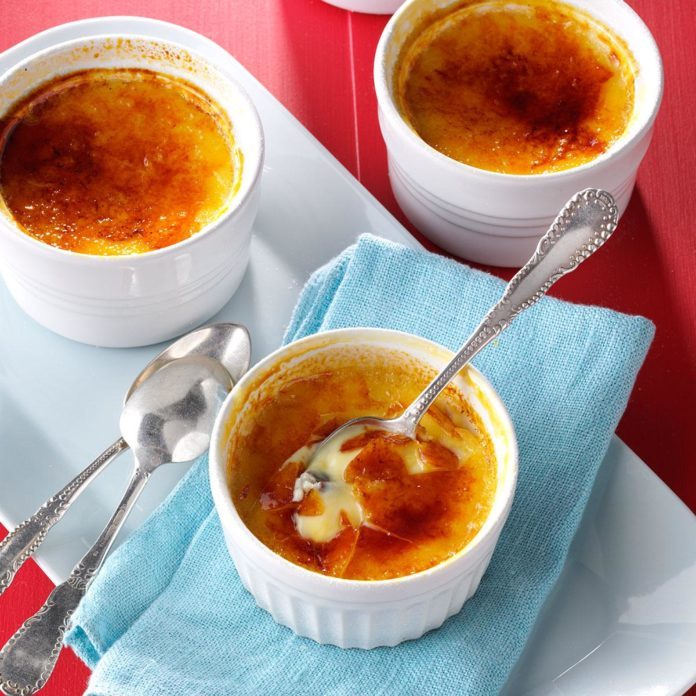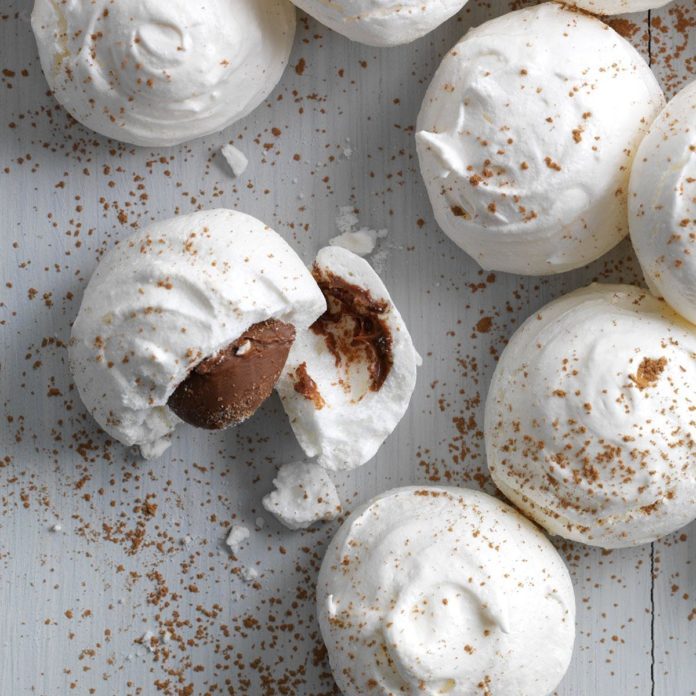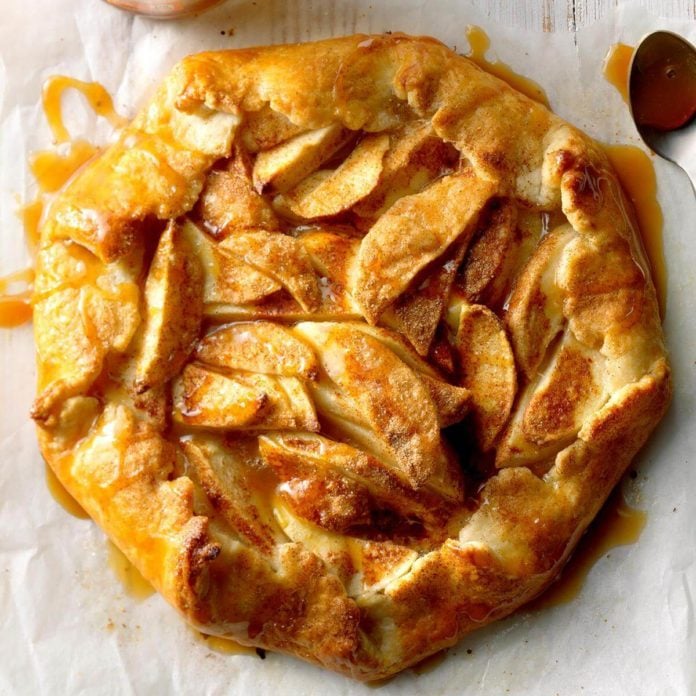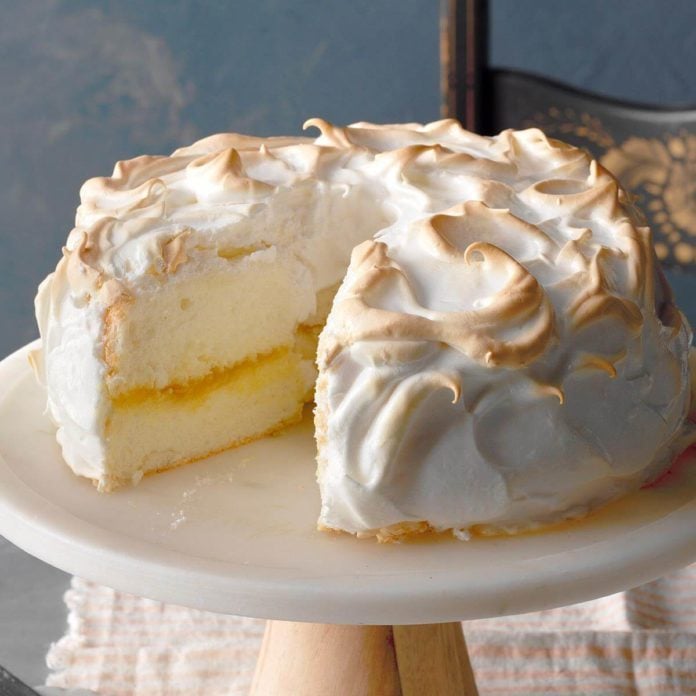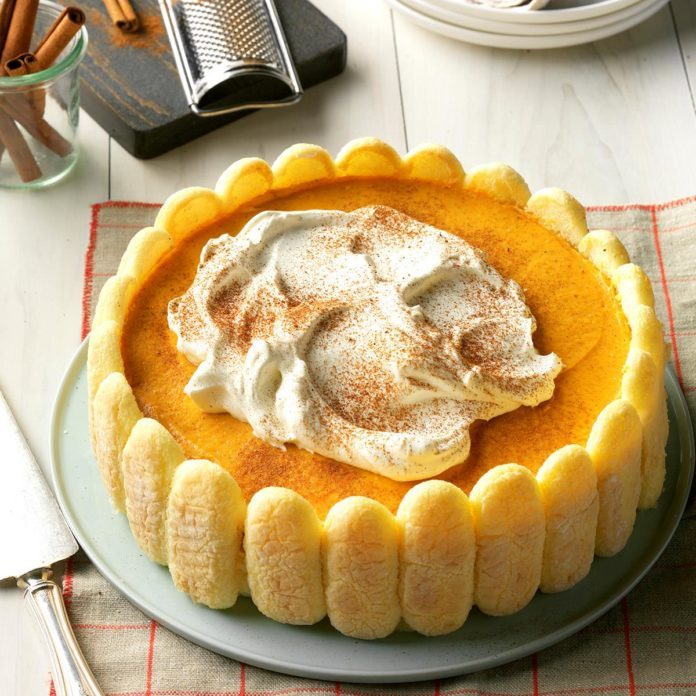For one of her first meals in Paris, Julia Child ate sole meuniere, a simple-seeming white fish cooked in butter and lemon. In her memoir, My Life in France, she called it “the most exciting meal of my life.” The soon-to-be famous chef was already in her 40s when she tasted this fish, and it may have launched her glorious career.
When we heard this, we just had to taste the fish that changed the course of home cooking!
How to Make Julia Child’s Sole Meuniere
What You’ll Need
- Skinless and boneless sole fillets, or other thin white fish fillet (I bought three for two hungry people)
- 1/4 cup flour on a plate
- 3 tablespoons clarified butter
- 4 tablespoons plain butter
- Parsley, minced
- One lemon, quartered
- Salt and pepper
Note: I followed the recipe in The Way to Cook, which provides detailed step-by-step instructions plus troubleshooting tips. There is an abbreviated, more conversational version in Julia’s Kitchen Wisdom, which you may prefer if you like your recipes relaxed and adaptable.
Initial Thoughts
At a glance, I expected this recipe to resemble all the other lemon-spritzed fish dishes I’ve eaten before. Tasty enough, but definitely with a whiff of low-calorie cooking about them. Then I remembered that, as in many classic French recipes, the trick is to showcase simple, quality ingredients with meticulous cooking technique.
With a gulp, I hoped my technique would live up to Julia’s direction.

The First Steps
I called around town until I found a grocery store that sold sole fillets. I struck out on Dover sole, but found a respectable Pacific sole. At home, I left the fish out on the counter and readied my other ingredients. The fish cooks in a flash—the cooking time is less than four minutes—and I knew once I started, I wouldn’t have any time to pause. I sprinkled flour over a large plate, sliced my lemon, and chopped my parsley. (Confession: I rarely prep all my ingredients in advance, preferring to rush around like a maniac while I cook. Just having everything set out on the counter made me feel like a pro.)
To clarify butter, I dumped a few tablespoons into a glass dish and microwaved until the butter had melted and a thin layer of white froth floated on top. I skimmed off the froth with a spoon—these are the milk solids, which burn easily. Without them, the butter can withstand cooking at high heat. In other words, don’t skip this step! (Here’s the recipe in full detail.)
Heat the Pan and Prep the Fish
I set my heaviest cast-iron pan over medium-high heat—Julia’s recipe specifies that you want the fish to brown, which means you need a high initial heat. While it warmed up, I dredged the fillets in the flour and gave them a quick sprinkle of salt and pepper. (I kept glancing back at the book: Is that it? Yes, that’s really all you need.)
When I flicked water at the pan, the drops sizzled over the iron. Ready to cook! I poured in a few spoonfuls of clarified butter, which immediately began to hiss and sizzle. Quickly, I added the fish, placing each fillet so it wasn’t crowded in the pan. You want the fish to fry, not steam.
Love Julia Child? This Taste of Home editor cooked her classic recipes for an entire week.

Cook ’til Just Done
The first side of the fish cooks for two minutes. The whole time, the butter wildly, cheerfully popped and danced, or, as Julia would say, “sputtered.” The browning butter smelled amazingly nutty and delicious. When the timer rang, I carefully eased a spatula under each fillet and gave it a cautious flip. So far, so good! The fillets had achieved a lovely golden brown crust.
I let the fish cook for another two minutes on the other side. Julia specifies that the fish should be just cooked: If it flakes, it’s overcooked. (Told you the technique was exacting!)
Here’s where I confess a misstep: When I tried to remove the fillets from the pan, they were stuck, and in my well-intentioned-but-probably-rough spatula-poking, two of the fragile fillets broke apart. Even with their beautiful brown crust, they looked a bit sad on the plate. What would Julia do? Cry? Never. I straightened my shoulders and tightened my apron. “Never apologize!” Julia would say. I showered the fish with parsley, hiding the worst of the damage.
Next up, adding another gob of butter to the pan to create a sauce. To help remove the stuck fish bits, I added the juice of half my lemon. By the time the butter melted, the sauce was done. As I poured it over the fish, the parsley sizzled up in the heat, and everything smelled so amazing I no longer cared about the broken fillets.
Here are the best cooking lessons we learned from Julia Child.
The Verdict
As soon as I tasted the sole meuniere, I was sorry I’d ever doubted Julia. Outside, the fish was slightly crisp from browning; inside, it was meltingly tender. The sauce was so rich and decadent, like butter’s highest calling. And the lemon’s acidity balanced all the flavors and kept the rich dish from feeling heavy.
I was so fixated on the fish I forgot to make a side—whoops! Luckily I’d made three fillets for me and my husband. We polished them off. Best of all, the meal only took about half an hour to prepare. With practice, this recipe will become a muscle-memory meal for me: one of those dishes you could make in your sleep, but which never fail to impress. Brava, Julia!
Next time, I’ll try to finish off the meal with one of these incredible French desserts.
It takes just two ingredients to make these impressive but easy-to-do French pastries, which are often called palm leaves. —Taste of Home Test Kitchen, Milwaukee, Wisconsin
Get Recipe
Inspired by a favorite ice cream flavor, I created this make-ahead recipe to free up some time in the kitchen. You can also serve this as a custard if you choose to not caramelize the top. —Eleanor Froehlich, Rochester, Michigan
Get Recipe
I've always loved beignets, but never thought I could make them myself. Turns out they're easy! Sometimes I'll even make a quick berry whipped cream and pipe it inside for a fun surprise. —Kathi Hemmer, Grand Junction, Colorado
Get Recipe
Our family adores lemon desserts. I like to make this lemony tart for brunch. For extra-special events, I bake it in my heart-shaped tart pan. —Joyce Moynihan, Lakeville, Minnesota
Get Recipe
The pressure cooker is the perfect cooking vessel for the classic dessert creme brulee. The crunchy brown sugar topping in this recipe is wonderful, and the custard is smooth and creamy.—Taste of Home Test Kitchen
Get Recipe
This flaky, buttery pastry dessert has a filling of fruit, walnuts, coconut and cinnamon. There's a lot to love! For even more appeal, dollop sweetened whipped cream on top of each serving. —Ellen Kozak, Milwaukee, Wisconsin
Get Recipe
Julia Child had a love of life and French cooking, as she and and Alex Prud'homme described in the book My Life in France. The woman who introduced Americans to the delights of French cuisine would find these crisp, chewy French-style macarons cookies a delight, too! —Taste of Home Test Kitchen
Get Recipe
Dress up classic creme brulee with an easy-to-make cranberry sauce. The sweet-tart sauce compliments the rich, creamy custard. —Taste of Home Test Kitchen
Get Recipe
There's a nice chocolaty surprise inside these sweet kisses. They're my husband's top choice each Christmas.—Tami Henke, Lockport, Illinois
Get Recipe
I always feel like a French chef when I serve these pretty crepes. Although they take a little time to prepare, they're well worth the effort. My guests are always impressed. —Debra Latta, Port Matilda, Pennsylvania
Get Recipe
I had never seen a "pie without a pan" until my daughter brought back this wonderful pear almond tart recipe from a Rotary Club exchange program in Belgium. It's still a family favorite after all these years. —Sherry LaMay, Capitan, New Mexico
Get Recipe
It's well worth the effort to whip up this creamy tart bursting with juicy berries. A friend gave me the recipe, and it always receives rave reviews at gatherings. —Susan Terzakis, Andover, Massachusetts
Get Recipe
These warm spiced pears elevate slow cooking to a new level of elegance, yet they're incredibly easy to make. Your friends won't believe this fancy-looking dessert came from a slow cooker. —Elizabeth Hanes, Peralta, New Mexico
Get Recipe
Dry and candied fruit stud this baba au rhum. The rum is subtle, so it is suitable as a dessert or on a brunch buffet. —Diane Halferty, Tucson, Arizona
Get Recipe
A friend invited me to go to a cooking demo at her church years ago, and one of the recipes prepared was this luscious souffle. It was so easy—and absolutely delicious. —Joan Hallford, North Richland Hills, Texas
Get Recipe
You may be tempted to save these chocolate truffles for a special occasion since these smooth, creamy chocolates are divine. But with just a few ingredients, this truffle recipe is easy to make anytime. —Darlene Wiese-Appleby, Creston, Ohio
Get Recipe
My family often has company over for breakfast or brunch, and these light fruit-topped crepes are our favorite. The sweet sensations are as fast to make as they are fabulous. You can cook the crepes the night before, refrigerate them with waxed paper in between, then fill and top them in the morning. —Shelly Soule Las Vegas, Nevada
Get Recipe
Traditional macarons are confections made with egg whites, sugar and almonds. Our Test Kitchen's version calls for pistachios and features a luscious chocolate filling. —Taste of Home Test Kitchen, Milwaukee, Wisconsin
Get Recipe
These moist treats will have everyone reaching for more. Folks tell me they enjoy these French Christmas cookies. In fact, the batches I make ahead for my family and store in the freezer seem to mysteriously disappear each year—even though the chocolate topping I put on before serving hasn't been added yet! —Judy Wilder, Mankato, Minnesota
Get Recipe
If you like the tang of citrus, you’ll love this lemon tart. The apricot preserves on top add a nice bit of sweetness. —Peggy Lunde, Costa Mesa, California
Get Recipe
This eye-catching dessert is guaranteed to delight holiday dinner guests. Chocolate lovers will lick their lips over the yummy cocoa cake, mocha filling and frosting. For a festive touch, I garnish the log with marzipan holly leaves and berries. —Jenny Hughson, Mitchell, Nebraska
Get Recipe
Like an apple pie without the pan, this scrumptious tart has a crispy crust that cuts nicely and a yummy caramel topping. —Betty Fulks, Onia, Arkansas
Get Recipe
This lovely and luscious treat is rumored to have been the favorite dessert of European royalty long ago. I know that it's won the hearts of everyone I've ever made it for. Enjoy! —Lorene Milligan, Chemainus, British Columbia
Get Recipe
These crisp, delicate cookies are light as a feather. Mini chocolate chips and chopped nuts are a delightful and yummy surprise in every bite. Mom knows this fun dessert is a fitting finale to a big meal. —Gloria Grant, Sterling, Illinois
Get Recipe
I love chocolate and it is so quick and easy to make that I can surprise my family anytime of the year. Feel free to add toppings of your choice. —Karla Krohn, Madison, Wisconsin
Get Recipe
Here is a simple and delicious treat featuring a thin, tender crepe stuffed with a creamy chocolate-hazelnut spread and bananas lightly sauteed in brown sugar and butter. It tastes elegant but takes so little effort. —Cathy Hall, Lyndhurst, Virginia
Get Recipe
Meet the Cook: Whenever we have rolls and coffee after church, these come along with me. Here on the high plains, we've been raising cattle, wheat and daughters for 30 years. Our two oldest are grown, and our youngest just began college. -Betty Ann Wolery, Joplin, Montana
Get Recipe
To surprise my banana-loving family, I made this dessert for a reunion, where it stood out among the usual fare. These special treats are something to look at and mouthwatering delicious. —Ruby Williams, Bogalusa, Louisiana
Get Recipe
My family has passed down this elegant dessert generation by generation. It started with my Russian great-grandmother, who traveled to America more than 100 years ago. I love continuing the tradition with her recipe. —Tonya Burkhard, Palm Coast, Florida
Get Recipe
I've been told that this dessert tastes exactly like a lemon meringue pie and that it's the best angel food cake anyone could ask for. I'm not sure about all of that, but it is delightful to serve, and each slice is virtually fat free. —Sharon Kurtz, Emmaus, Pennsylvania
Get Recipe
I like to griddle up a big batch of my fruit-filled crepes for parties. The fresh citrus flavor really brightens them up. —Freda Becker, Garrettsville, Ohio
Get Recipe
The starch in corn acts as a natural thickener for this dessert and adds an extra sweetness. The caramelized sugar crust and fruit garnish make for a lovely presentation.—Maryanne Jensen-Gowan, Pelham, New Hampshire
Get Recipe
My mother-in-law gave me this recipe a while back and I just love it! I make it for my husband and his friends during hunting season and it's a big hit. —Lorelle Edgcomb, Granville, Illinois
Get Recipe
This pretty, golden-topped puff is so easy to whip up, but looks like you really fussed. Lightly laced with rum, the moist, tender, banana-rich souffle makes that perfect “little something” to wrap up any holiday dinner. —Crystal Jo Bruns, Iliff, Colorado
Get Recipe
Simply elegant is a fitting description for this smooth treat. Whipped cream teams up with white chocolate to make this easy recipe extra special. —Laurinda Johnston, Belchertown, Massachusetts
Get Recipe
I was recently at a wedding reception where the menu was all small bites. Here’s my rendition of the pear pastries they served. They're the perfect combo of savory and sweet. —Arlene Erlbach, Morton Grove, Illinois
Get Recipe
White chocolate and toasted ground hazelnuts make a heavenly combination in this rich, silky custard. Guests are sure to rave over the elegant individual treats served in ramekins. —Elise Lalor, Issaquah, Washington
Get Recipe
For brilliant breakfast or dessert crepes, I tweaked my grandmother's recipe. If you want a little crunch, stir in some toffee and chocolate bits or nuts. —Kristin Weglarz, Bremerton, Washington
Get Recipe
The word “noisette” is French for hazelnut, and these delightful tassie-style treats have a yummy toasted nut flavor in a golden and delicious pastry. —Marie Rizzio, Interlochen, Michigan
Get Recipe
My family loves palmiers from the bakery, so I created my own recipe. These have a Mideastern twist with the addition of rosewater, honey and a touch of cardamom. They are light and crisp, and a special treat for the holidays. —Deborah Hinojosa, Saratoga, California
Get Recipe
Delicate cookie cups create delightful serving bowls for the creamy tangerine mousse. The cranberry syrup makes a delectable garnish. —Jessie Sarrazin, Livingston, Montana
Get Recipe
Croissants are a super quick stand-in for cream puffs in this luscious treat. The from-scratch caramel sauce couldn’t be easier to make and it’s irresistible with butter pecan ice cream. —Taste of Home Test Kitchen
Get Recipe
Note: Every product is independently selected by our editors. If you buy something through our links, we may earn an affiliate commission.
The post This Is the Surprising Dish That Sparked Julia Child’s Career appeared first on Taste of Home.
Kelsey Mueller



